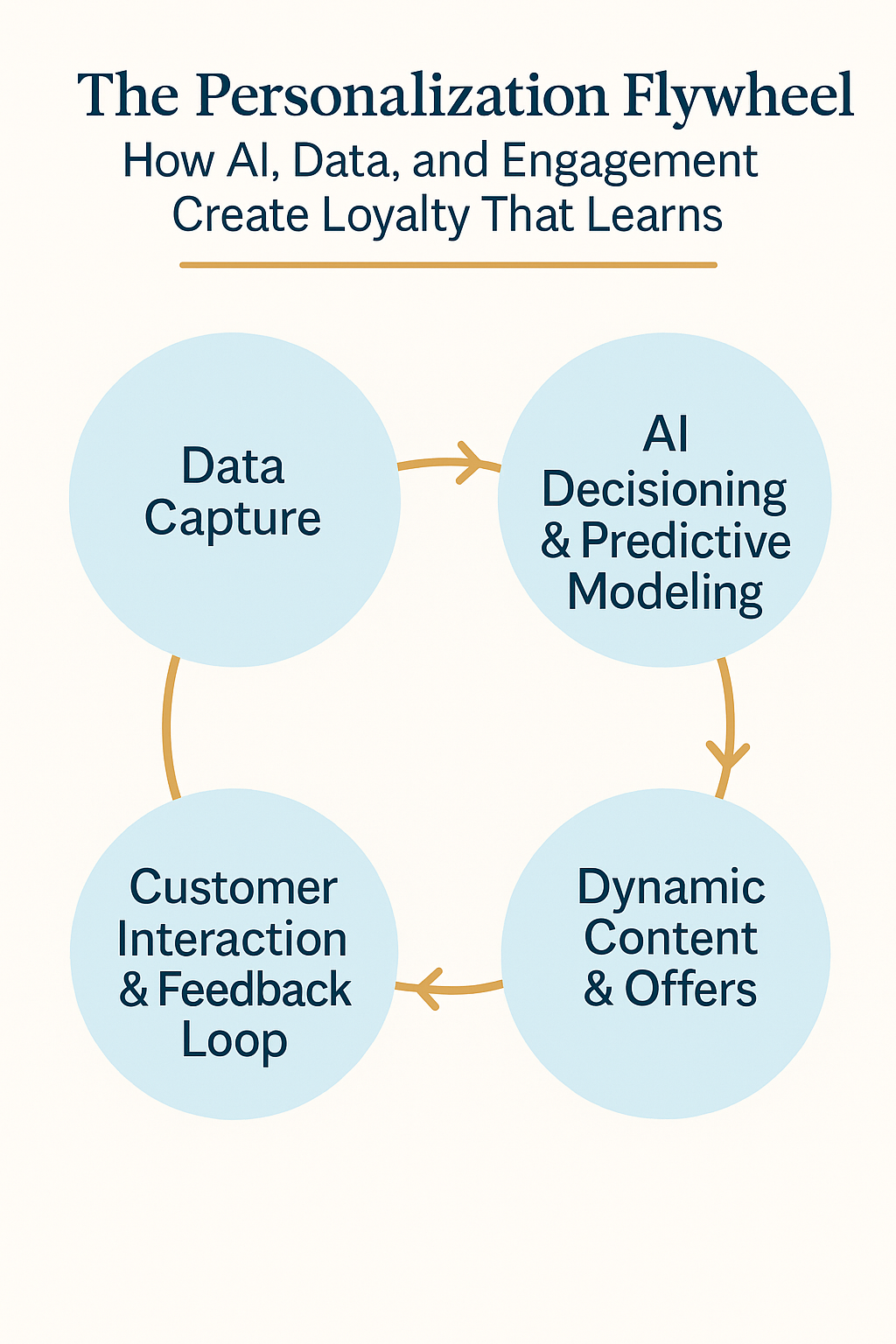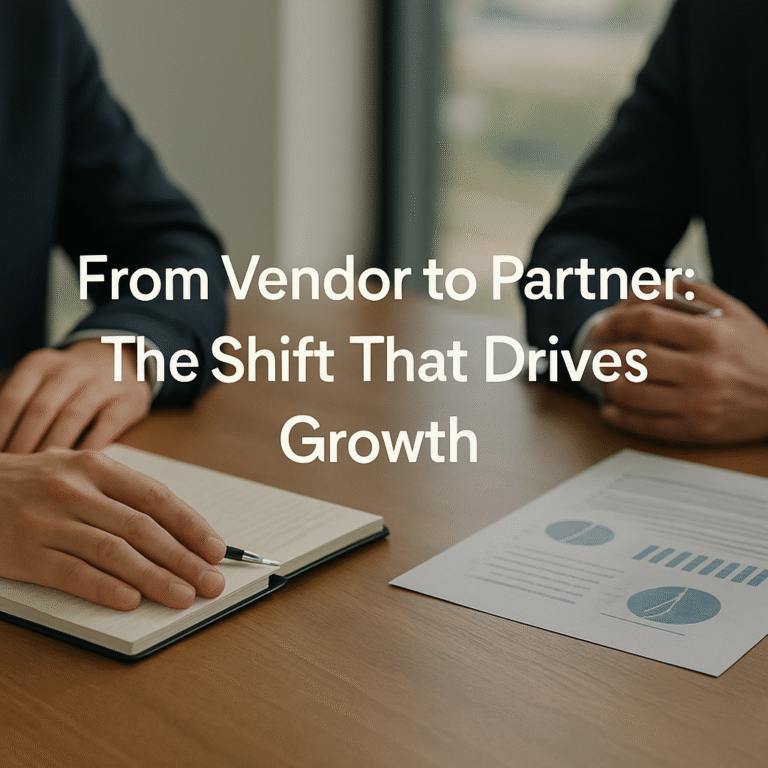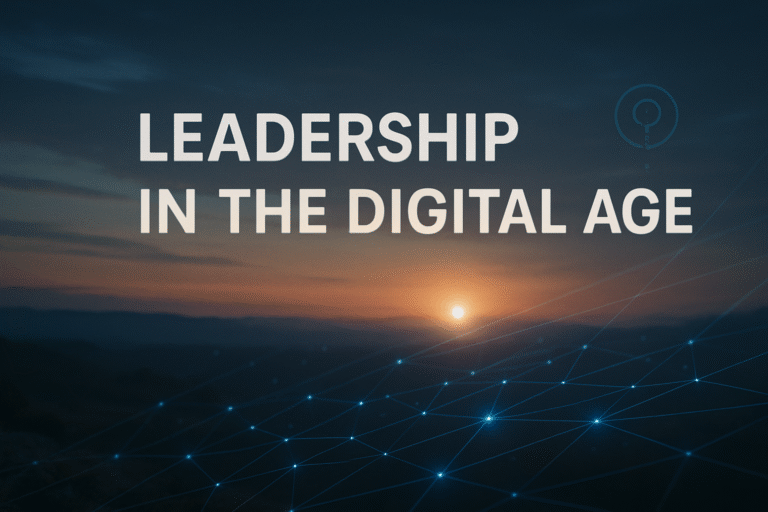Customer expectations are evolving. In a world where consumers interact with hundreds of brands across dozens of channels, loyalty is no longer built on points alone – it’s built on relevance, trust, and value delivered in the moment.
To meet that bar, personalization can’t be static. It must be intelligent, dynamic, and iterative – constantly learning from customer behavior, applying predictive models, and adapting content and offers accordingly.
At the center of this shift is what I call the Personalization Flywheel: a closed-loop engagement model powered by AI and real-time data that continuously evolves based on what your customers do, not just what they say.
🔁 The Four Components of the Personalization Flywheel
1. Data Capture
Effective personalization begins with listening. Brands must capture a rich mix of data points, including:
- Zero-party data (what customers intentionally share: preferences, survey answers, reward interests)
- Behavioral data (browsing habits, redemption patterns, engagement signals)
- Transactional data (purchase history, channel activity, lifecycle stage)
These insights aren’t just for segmentation, they power intent-based personalization at the individual level.
2. AI Decisioning & Predictive Modeling
Once data is captured, AI transforms it into decision-ready insights:
- What reward is most motivating for this individual?
- When are they most likely to engage?
- Which channels drive conversion for this segment?
With predictive modeling, brands shift from reacting to proactively anticipating behavior. The output isn’t just a guess, it’s a probability-informed recommendation tailored to each member.
3. Dynamic Content & Offers
The next step is execution: delivering relevant, context-aware experiences across touch points. AI enables:
- Real-time content adjustments
- Offer personalization based on engagement or value tiers
- Channel optimization (email, push, in-app, SMS, site)
Here’s the shift: personalization is no longer a one-way push. Every message becomes both an output and a new data input.
4. Customer Interaction & Feedback Loop
This is where the magic happens.
Every time a customer clicks, ignores, redeems, or re-engages, that signal becomes part of the next cycle. This feedback loop feeds your AI models, improving:
- Offer accuracy
- Timing predictions
- Cross-channel coordination
The more interactions you capture, the smarter your system becomes. It’s loyalty that learns.
💡 Why This Matters Now
This approach isn’t just a technical upgrade. It’s a mindset shift:
- From campaigns to continuous conversations
- From segment-level thinking to individual-level intelligence
- From lagging indicators to predictive, real-time optimization
For brands competing in saturated markets, this flywheel offers differentiation – a way to earn attention, deepen relationships, and deliver ROI through strategic engagement.
✨ Ready to Build Your Flywheel?
If your personalization strategy still feels static or siloed, it may be time to rethink the loop. AI can’t work in isolation. It needs a connected data strategy, cross-channel alignment, and a feedback system that treats every customer action as a learning opportunity.
When you get this right, personalization stops being a tactic and becomes a strategic engine for growth.






